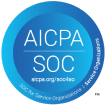Reducing Time-to-Hire Without Sacrificing Quality
44 days. That is the global average time to hire in 2025, up from 31 days in 2023.
So, what is your time-to-hire costing you?
Chances are you are missing out on your top candidate because they are gone in the first 10 days. Slow hiring also negatively affects your brand, which could cost you up to 10% more per hire.
Then add in your cost of vacancy (revenue per employee ➗working days per year x days vacancy remains open). And don’t forget that a poor candidate experience not only reduces your future talent pool but will also cost you MORE money and time down the line.
So what do you do now? Implement ways to reduce your time-to-hire without sacrificing quality, so that you can hire top talent faster.
Take a look at the tips below on how to maximize your hiring process so you can stop losing money and time, and start earning it back.
Challenges in Reducing Time-to-Hire
Reducing time to hire is a priority for most companies, but several challenges can create bottlenecks in the process. These are the top five obstacles faced:
- Lengthy Hiring Processes: Multiple interview rounds and getting the hiring team on the same page can cause delays.
- Ineffective Sourcing Strategies: Relying on only traditional job boards may not attract top talent, and the lack of a talent pipeline will have you starting from scratch for each role.
- Slow Screening and Selection: The traditional screening process is time-consuming, and job descriptions that aren’t up to par lead to longer screening times.
- Delayed Communication: Slow responses from recruiters, hiring managers or candidates can create bottlenecks, and candidates waiting too long for responses may lose interest or accept other offers.
- Technology Limitations: Both a lack of automation in your ATS and outdated recruitment tools can lead to inefficiencies.
Although decreasing time-to-hire is a top priority, it is important to note that you need to cut time where it makes sense. If you cut corners and rush decisions, you are at risk of sacrificing quality, which is why it is important to create a strategic plan and implement the right strategies.
Strategies to Streamline Hiring Without Compromising Quality
Streamlining the hiring process while maintaining quality requires a balance of efficiency and thorough candidate evaluation. Here are key strategies to achieve this:
- Video Interviewing: Implementing pre-recorded on demand video interviewing speeds up your hiring process by allowing candidates to interview anywhere, at any time, from any device. Most candidates submit their interviews within 24 hours of receiving the invite.
- Automating Scheduling: What used to take days is now just the click of a button away. With automated scheduling, you eliminate the back-and-forth emails involved in a manual process. HR teams that use automated scheduling see most candidates book their interviews within a few hours of receiving an invitation. By implementing this simple tool, you can cut scheduling time by an impressive 84%.
- AI-Assisted Screening: AI tools, like interviewstream’s AI interview summary tool, can help you evaluate candidates faster while maintaining accuracy. It analyzes video interviews for you and provides concise key point summaries for each interview and question, helping you make faster, more informed hiring decisions.
- Structured Interviews: Structured interviews provide a standardized and efficient approach to candidate evaluation, reducing time-to-hire while maintaining quality. They decrease candidate evaluation time by eliminating redundancies, reducing bias, simplifying interview coordination, and creating easier candidate comparison.
- Collaboration Tools: Collaborative platforms help streamline the hiring process by enabling real-time communication, efficient data sharing, and better decision-making. They centralize candidate information and allow for real-time collaboration among team members, both of which set you up for faster, informed decision-making.
Measuring Success: Balancing Speed and Quality
To optimize hiring efficiency and maintain candidate quality, tracking the right metrics is crucial. Here are the top metrics to track in your hiring process:
Time-to-Hire
- Definition: The number of days between a candidate applying (or being sourced) and accepting the job offer.
- Why It Matters: It measures the efficiency of your recruitment process and helps identify bottlenecks.
Time-to-Fill
- Definition: The number of days between a job requisition being opened and a candidate accepting the offer.
- Why It Matters: It shows how long it takes to fill a position from the moment the need arises.
Time in Each Hiring Stage
- Definition: The average time candidates spend in different stages (e.g., screening, interviews, background checks).
- Why It Matters: It helps pinpoint where delays occur in the process.
Offer Acceptance Rate
- Definition: The percentage of candidates who accept a job offer.
- Why It Matters: It indicates how competitive your offers are and how well candidates are engaged throughout the process.
Once you have your hiring metrics, you can use the insights to streamline your process. For instance, if your time-to-hire data reveals that candidates are stuck in the interview stage for too long, you can make changes to optimize each interview round, implement structured and on demand interviews, and leverage AI screening tools to pre-qualify candidates. By making data-driven decisions, you can hire smarter, faster, and more efficiently.
*For a deeper dive into recruiting metrics, check out our 7 recruiting metrics that will take your hiring process from good to great!
Keep the Quality with interviewstream
The number is 44, but can you beat it? You absolutely can.
You can and will decrease your time-to-hire while maintaining quality with a few simple tweaks to your recruitment process that all start with interviewstream.
Reach out to an interviewstream expert today to explore time-saving tools that will transform your hiring process and help make you stand out from the competition!
About The Author
Drew Whitehurst is the Director of Marketing, RevOps, and Product Strategy at interviewstream. He's been with the company since 2014 working in client services and marketing. He is an analytical thinker, coffee enthusiast, and hobbyist at heart.
